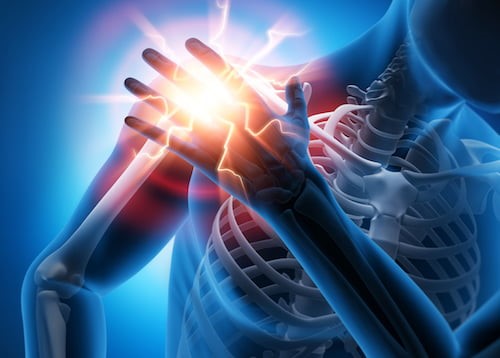
Neuromuscular disorders
Neuromuscular disorders are conditions in which central nervous system may get affected. According to Ayurveda all neuromuscular disorders come under a common heading called as Vata Vyadhi. These neuromuscular disorders are various kinds of diseases that are caused due to aggravated Vata Dosha. Pakshaghata (paralysis), Avabahuka (frozen shoulder), Slipped disc, Grudhrasi (sciatica), backache, cervical spondylitis etc.
Symptoms of Vata Vyadhi are joint pain, restricted/ loss of movements, stiffness, tingling numbness, crepitus & others.
Ayurveda has described treatment for these diseases extensively utilizing internal medication as well as external (Panchakarma) therapies like Abhyanga, Swedana (Sudation), Patrapinda and Dry Potli massage, Navarakizhi, Basti (Enema therapy) etc.
Special diet management and lifestyle management according to principles of Ayurveda is also needed to be followed to enhance effects of medicines and to stop further deterioration of the condition.

1. Slip Disc
Discs in any part of the spine or vertebral column can show such damaging effects. This kind of hernia of the vertebral discs is called slip disc in common language. Slip disc is more common in lower back and spine areas, but it can rupture or become herniated in any part of the vertebral column.
Herniated discs can occur in any part of the spine. Herniated discs are more common in the lower back, especially at the L4-L5 and L5-S1 levels (lumbar disc herniation). This is because the lumbar spine carries most of the body’s weight. The second most common area is the neck (cervical disc herniation). The area in which you experience pain depends on what part of the spine is affected.
Symptoms
- Pain and numbness on one side of the patient's body
- Pain radiating from the affected part to the arms and legs
- Extreme difficulty in movement and walking upto short distances
- Weakness in muscles
- Pain intensifies whenever the patient sits or stands for a long time
- Intense pain at night
- Burning, tingling, and aching sensation in the affected region
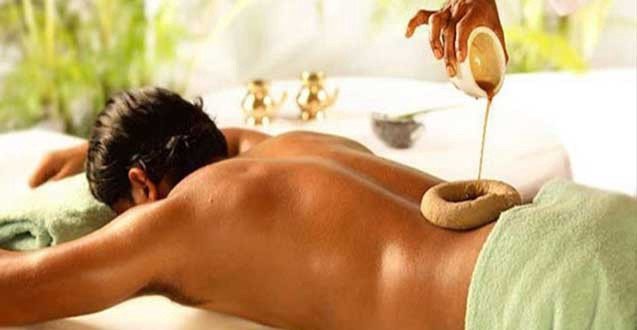
2. Backache Ayurveda Treatment
Back Pain (Low Back Pain) is pain felt in the lower back that usually originates from the muscles, nerves, bones, joints, or other structures in the spine. It is a common complaint. Most people will experience low back pain at least once during their lives. Back pain is one of the most common reasons people go to the doctor or miss work.
Back pain may have a sudden onset or can be a chronic pain; it can be constant or intermittent, stay in one place, or radiate to other areas. It may be a dull ache, or a sharp or piercing or burning sensation. The pain may radiate into the legs or feet, and may include symptoms other than pain. These symptoms may include tingling, weakness, or numbness.
Symptoms
- Muscle ache
- Shooting or stabbing pain
- Pain that radiates down your leg
- Limited flexibility or range of motion of the back
- Inability to stand up straight
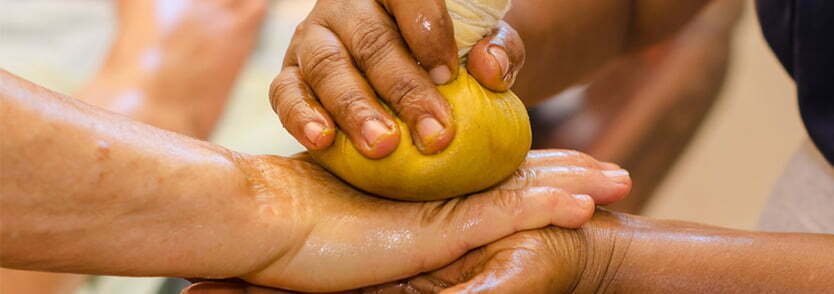
3. Rheumatoid Arthritis
Rheumatoid arthritis (RA) is an autoimmune disease that causes chronic inflammation of the joints. While inflammation of the tissue around the joints and inflammatory arthritis are characteristic features of rheumatoid arthritis, the disease can also cause inflammation and injury in other organs in the body.
Because it can affect multiple other organs of the body, rheumatoid arthritis is referred to as a systemic illness and is sometimes called rheumatoid disease & is a progressive illness that has the potential to cause joint destruction and functional disability.
Symptoms
- Vriscik damsha vata vedana (Morning pain severe in nature)
- Sanchari Vedana (shifting pain)
- Stambha (stiffness of joints)
- Jwara (Increase temperature)
- Karmahani (loss of movements)
- Sandhi Vikruti (joint deformity)
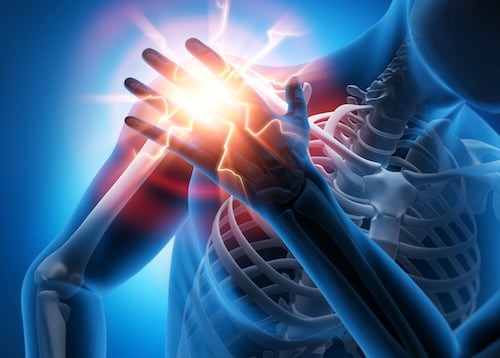
4. Frozen Shoulder
Frozen shoulder is a disease in which the shoulder gets stiff and the free movement of the joint becomes difficult or sometimes even impossible called adhesive capsulitis of the shoulder joint. It can occur because of injury, overuse, and diseases like diabetes and stroke.
In Ayurveda, the frozen shoulder disease is called “Ababahuka”. This is a pure reflection of Vata Roga. The Vata Dosha people tend to absorb the ‘Kapha’ fluids. This absorption in the joints results in a Frozen Shoulder. Vata dosha impairs the efficiency at the root of the shoulders, then contracts the veins and ultimately results in Apabahukam.Apabahukam results in loss of motion of the arms. Ayurveda treatment is very efficient in curing this illness.
Symptoms
- Restricted movement of the shoulder.
- Pain around the neck and shoulder.
- Hardness of muscles and joints around the shoulder.
- Stiffness around the shoulder usually happens in one shoulder at a time.
- Having difficulty moving and using the shoulders or arms ordinarily.
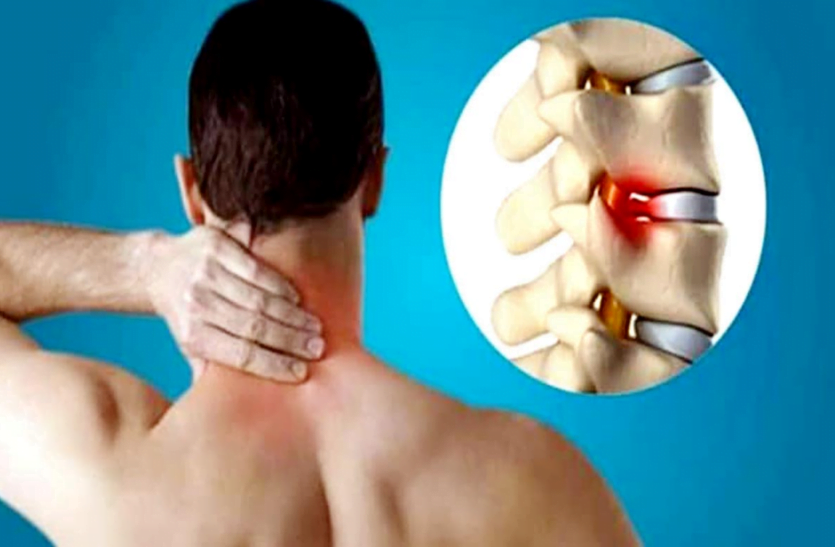
5. Cervical Spondylitis
Cervical spondylosis is a common degenerative condition of the cervical spine that is caused by age-related changes in the cushion between the joints of the neck and the neck bone. It is also called as Osteoarthritis of the neck.
Cervical spondylosis is a disease that affects the intervertebral discs of cervical vertebrae. To understand the pathology, cervical spine anatomy should be understood. The cervical spine contains 7 vertebrae. A spongy gel-like substance is situated between two vertebrae called intervertebral disc(IV Disc)which provides a cushioning effect . Cervical nerves emerge from pathways corresponding to the spine. In cervical spondylosis, these IV discs and vertebrae are affected in a different manner.
Symptoms
- Pain over the cervical region usually increased by excess movement and strain
- Referred pain: pain may transfer to the back of the head, shoulders, and upper arms
- Stiffness of neck
- Numbness, tingling, or weakness in upper limbs
- The feel of giddiness on the sudden movement of the head
- Pain radiating to the lower back.
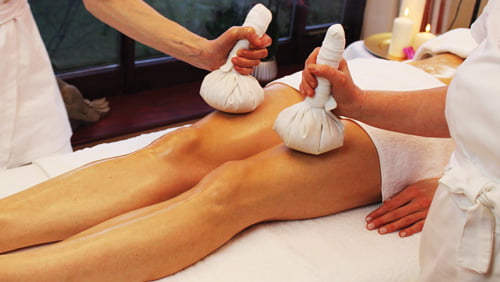
6. Osteoarthritis Ayurveda Treatment
Osteoarthritis (OA) is a condition that usually develops gradually over several years due to wear and tear of joints and affects several different joints. Therefore, they cannot act normally. Due to gradual erosion, ligaments face stretching that initiates the pain. Females are more prone to this than males, especially after menopause. its high prevalence among elderly people made it a major cause of disability among them.
Osteoarthritis is a chronic degenerative disorder of multifactorial etiology, characterized by loss of articular cartilage and periarticular bone remodeling. It involves the entire joint including the nearby muscles, underlying bone, ligaments, synovium, and capsule.
Symptoms
- Joint Pain- Most important symptom. Typically, the pain of osteoarthritis is aggravated by joint use and relieved by rest, but as the disease progresses, it may become
- Stiffness- Progressive stiffness of the involved joint upon arising in the morning or after a period of inactivity may be prominent but usually lasts less than 20 min. It is due to spasms of muscles.
Signs
- Swelling– Physical examination of the osteoarthritis joint reveals localized soft tissue swelling of mild degree. It is due to the changes in articular ends.
- Crepitus– rubbing sound or feeling on joint movement is called crepitus. It is one of the characteristic signs of osteoarthritis
- Local rise of temperature- On palpation of the joint local rise in temperature is indicative of
- Muscle Atrophy– weakness of local muscles involved is atrophy which may be due to disuse or due to reflex inhibition of muscle contraction

